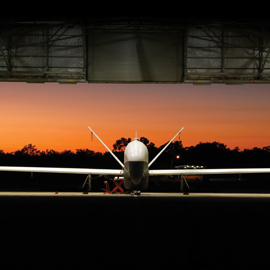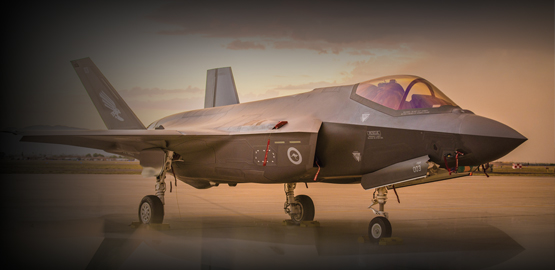The US Army estimates it will need to spend $1.7 billion in supplemental wartime dollars over the next several years to modernize and retain 8,585 mine-resistant, ambush-protected vehicles, while divesting itself of another 7,456 MRAPs it no longer needs.
But the majority of those the service will keep will be mothballed in prepositioned stocks, according to an internal Army document.
Even with thousands of vehicles sitting in warehouses awaiting the next conflict, the MRAPs that will remain in the force represent only one third of the 25,000the Pentagon bought since 2007, costing $50 billion.
Since it was a rapid acquisition program, the Defense Department had no long-term plans for the platform, and the Army and Marine Corps have been wrestling with what to do with the 25 variants in their fleets.
Saddled with so many expensive, hulking vehicles bought solely as a wartime contingency, the services are getting rid of as many MRAPs as possible — even going so far as to shred thousands in Afghanistan instead of sending them home. The military is selling the shredded metal parts to local Afghans for scrap.
But the MRAPs the service is keeping won’t come home cheaply. In addition to the $1.7 billion in overseas contingency operations (OCO) funds to be spent by the end of 2016, the Army anticipates it will require $17.6 million in base funding in fiscal 2016 and 2017 to complete the work, according to service briefing slides obtained by Defense News.
Dated Dec. 2, the slides outline Army thinking about what will be required in fiscal 2016-2020 to fund its programs of record. Army officials said they were unable to comment on the documents by press time.
The documents are part of the annual weapons systems review that all programs endure when officials put together the program objective memorandum budgets that look out five years.
As such, the numbers in the documents are not set in stone and will likely change as budgets and priorities shift in subsequent years. But they do provide a good snapshot of the current thinking in the Pentagon, and offer clues as to where managers are trying to drive their programs after absorbing guidance from Army leaders.
The documents show that if OCO funding ends before its expected expiration date of fiscal 2016, MRAP modernization activities will have to be shifted to the base budget, “which may result in the program, in its current status, becoming unaffordable.”
The defense bill passed by Congress in December includes $80 billion for the Afghanistan war, which includes $321 million for MRAP reset. While the 2015 OCO request hasn’t been made public yet, the slides reveal that the Army will request $304 million more in wartime funding in 2015 to fix up MRAPs.
Though the OCO account will decrease along with US forces in Afghanistan this year and beyond, there should be plenty of money for the Army to finish its MRAP refurbishment, said Todd Harrison of the Center for Strategic and Budgetary Assessments.
“I don’t think getting $1.7 billion in funding through OCO will be a problem,” he said. “DoD is getting some $80 billion in OCO funding this year — nearly as much as last year but with half as many troops deployed. I think they will continue to receive robust OCO funding in 2015 and 2016, so resetting MRAPs should not be an issue for the Army.”
So, what will the Army get for that money?
A full 5,036 of the 8,585 MRAPs the Army plans to keep will be stored in prepositioned stocks all over the world, with another 1,073 assigned for training activities. The remainder will be spread among the active force.
The Army will keep 5,651 Oshkosh-produced MRAP all-terrain vehicles (M-ATVs) out of the 8,700 DoD has bought since 2009, along with 2,633 Navistar-made MaxxPro Dash vehicles and 301 MaxxPro ambulances.
The M-ATV is smaller and more maneuverable than the original MRAP variants and was rapidly fielded once the Pentagon’s focus shifted to Afghanistan in 2009. The dirt roads, narrow mountain passes and weak bridges could not handle the size and weight of most MRAPs, leading to a quick fix that ended up being the variant the Army most wants to keep.
The Army is getting rid of thousands of Cougars developed by General Dynamics/Force Protection, some MaxxPro models from Navistar Defense, and several Caiman models from BAE Systems.
And the price to reset the vehicles isn’t cheap. The service estimates spending about $150,000 to reset each vehicle at the Red River Army Depot in Texas, and about $87,000 per vehicle at Livorno, Italy — the two depots that will see the majority of the work over the next three years.
Other recent Army estimates of the costs to bring MRAPs home from Afghanistan and repair them have hovered closer to the $250,000 to $300,000 mark.
An Army spokesman said the remaining MRAPs will be made available for use to other US government agencies and posted for Foreign Military Sales opportunities. If there are no takers, “the vehicles will be de-militarized and the raw materials recycled.”
It costs $12,000 to demilitarize each MRAP in Afghanistan before shipping it out of the country, so even if there are no buyers, the US will still have to pay tens of millions of dollars to clean and ship all the of the 11,000 MRAPs that it has deployed there.
As Defense News reported Dec. 4, the US has put about 2,000 MRAPs in Afghanistan up for auction on the international market instead of sending them home or destroying them in place — provided the foreign buyers pay to ship the trucks out of the country.
Overall, the US military is destroying about $7 billion worth of material in Afghanistan as US troops head for the exits, including the MRAPs.
A Pentagon spokesman said several foreign countries have expressed interest in buying the MRAPs in Afghanistan but no final agreements have been signed.
Now that the Army has a few thousand MRAPs in its formations going forward — using a vehicle that didn’t exist anywhere in its long-range plans six years ago — the critical question, as CSBA’s Harrison said, is “how many MRAPS do they need to keep and for what purpose? How do 8,000-plus MRAPs fit into DoD’s strategy for fighting wars in the future?”



























